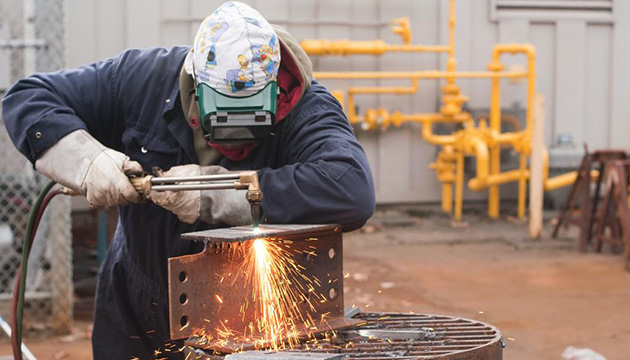There are over 100 trades in Canada. In British Columbia, the Industry Training Authority (ITA) regulates and manages programs for trades including the 49 which are Red-Seal.
What is a trade? A trade (or a craft) is a job that is almost exclusively hands-on, and where the skilled trade person either produces a product or offers a service.
Trades can be organized into four main categories:
- Construction includes, but is not limited to electricians, carpenters, plumbers, welders, painters, heavy equipment operators, and crane operators etc.
- Transportation includes operators (train, truck, boat), automotive service technicians, air traffic control, fuel/electrical systems technicians, and ship crew members.
- Manufacturing includes millwrights, tool and die makers, and precision metal fabricators.
- Finally, services tradespeople include hairstylists, locksmiths, butchers, cooks, chefs and horticulturists.
Some trades are regulated (meaning that you cannot practice or acquire certain levels until you have received your “ticket” or certification), while others are voluntary (you can certified and it will give you more credibility and benefits such as being able to charge more, but you can also work without certification).
For a comprehensive list of trades and regulations, check the ITA website here
The Red Seal is available for some trades only and allows, among other things, to have your trade recognized in any Canadian province or territory. For more information on Red Seal, check here.
There are two ways to enter into trades:
Challenging: If you have extensive experience from outside Canada and have received training either formal or on the job, you may be able to challenge the certification. The challenge usually includes a final exam and the review of past experience and training.
To challenge a trade you need to meet certain criteria that varies depending on the trade, each trade requires a minimum of hours of related work plus evidence that you have worked in the full scope of the trade. If you think you may be eligible to challenge a trade, check the ITA website to learn more about the process.
Apprenticeship: If you don’t have too much experience or are completely new to trade, you may enter the trade through apprenticeship. Apprenticeships may last 2-5 years depending on the trade and usually involve on-the-job training and some college attendance. Apprentices are paid for the work they do and college cost is usually cheaper than a professional career. You can enter the apprenticeship by taking a foundation program (available only for some trades) or by doing a PLAR (Previous Learning Assessment Recognition) which recognizes both training and work experience. You can also enter an apprenticeship by finding an employer who is willing to support you through the process.
An easy way to find employers who are looking for apprentices is the B.C. Apprentice Job Match Tool. To learn more about this tool check here. To register yourself for a match, visit here: Apprentice Job Match.
Next article: Becoming a Chef in B.C. – Alternative careers for foodies.



 Argentinian born Silvia Di Blasio is a Certified Career Counsellor, Life Coach and an immigrant herself. With a passion for sustainability, food security and resilient communities, Silvia shares her time and skills through diverse projects including writing, blogging, facilitating workshops, coaching and consulting. Silvia works as a Case Manager helping immigrants to get back to their pre-landing occupations at the Career Paths Program at ISSofBC.
Argentinian born Silvia Di Blasio is a Certified Career Counsellor, Life Coach and an immigrant herself. With a passion for sustainability, food security and resilient communities, Silvia shares her time and skills through diverse projects including writing, blogging, facilitating workshops, coaching and consulting. Silvia works as a Case Manager helping immigrants to get back to their pre-landing occupations at the Career Paths Program at ISSofBC.